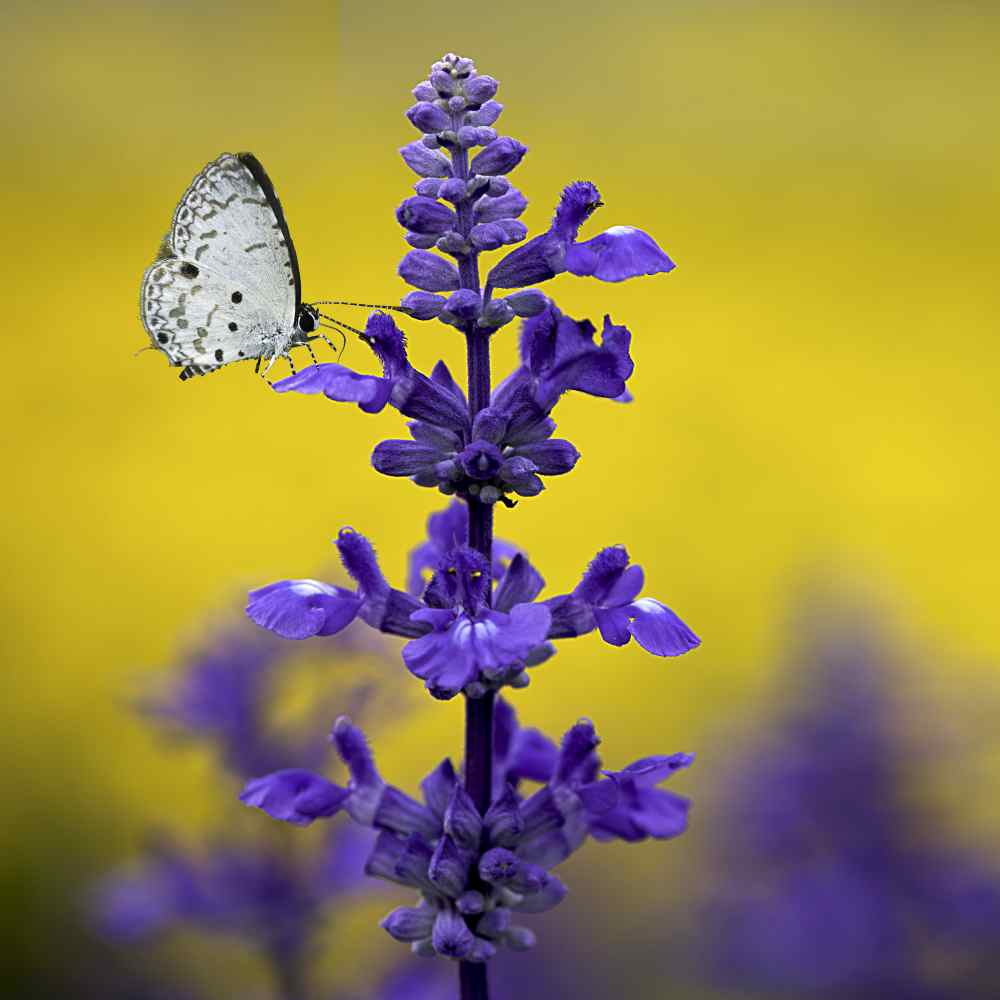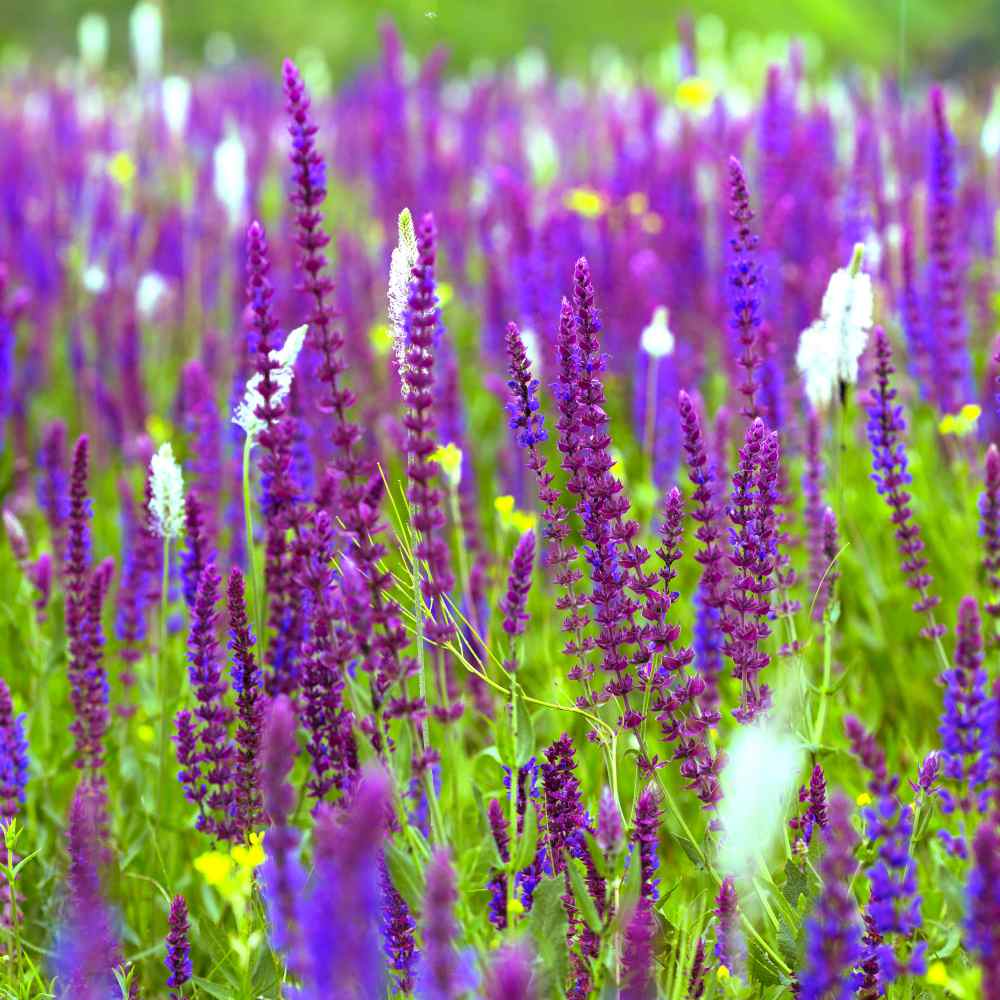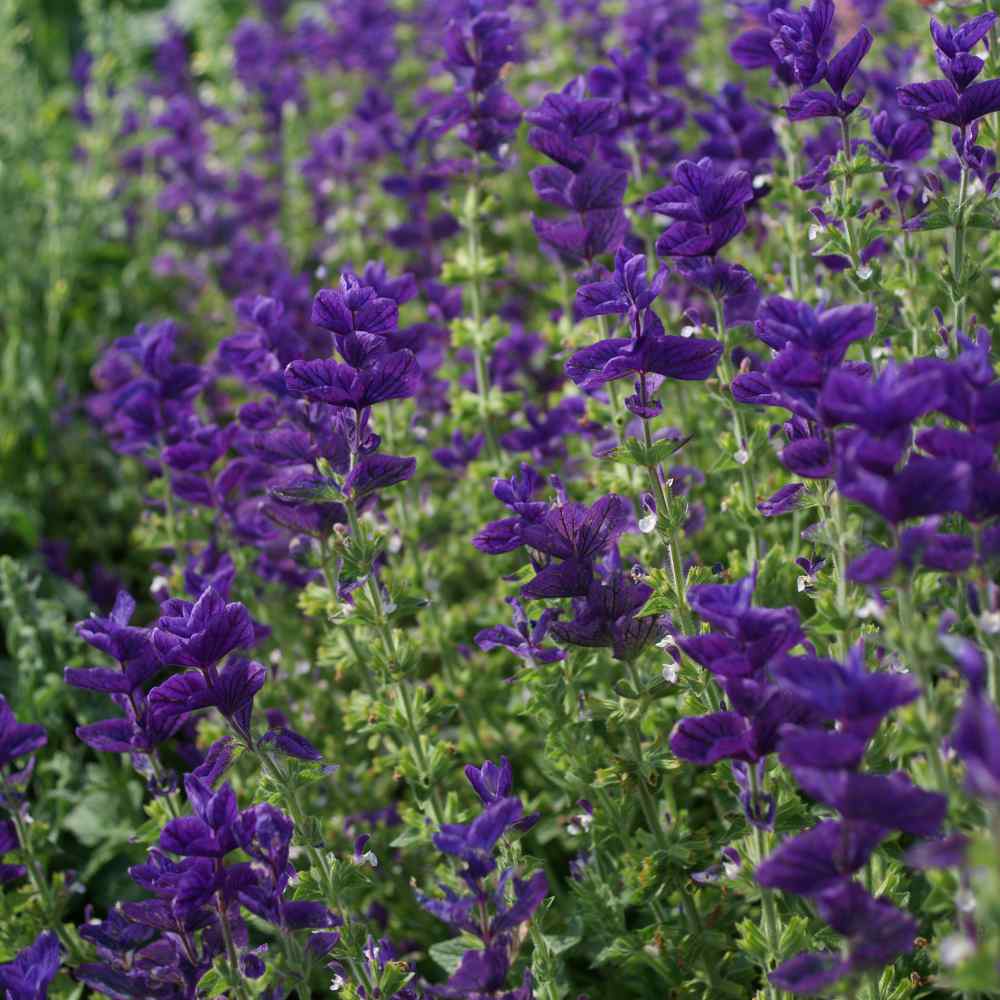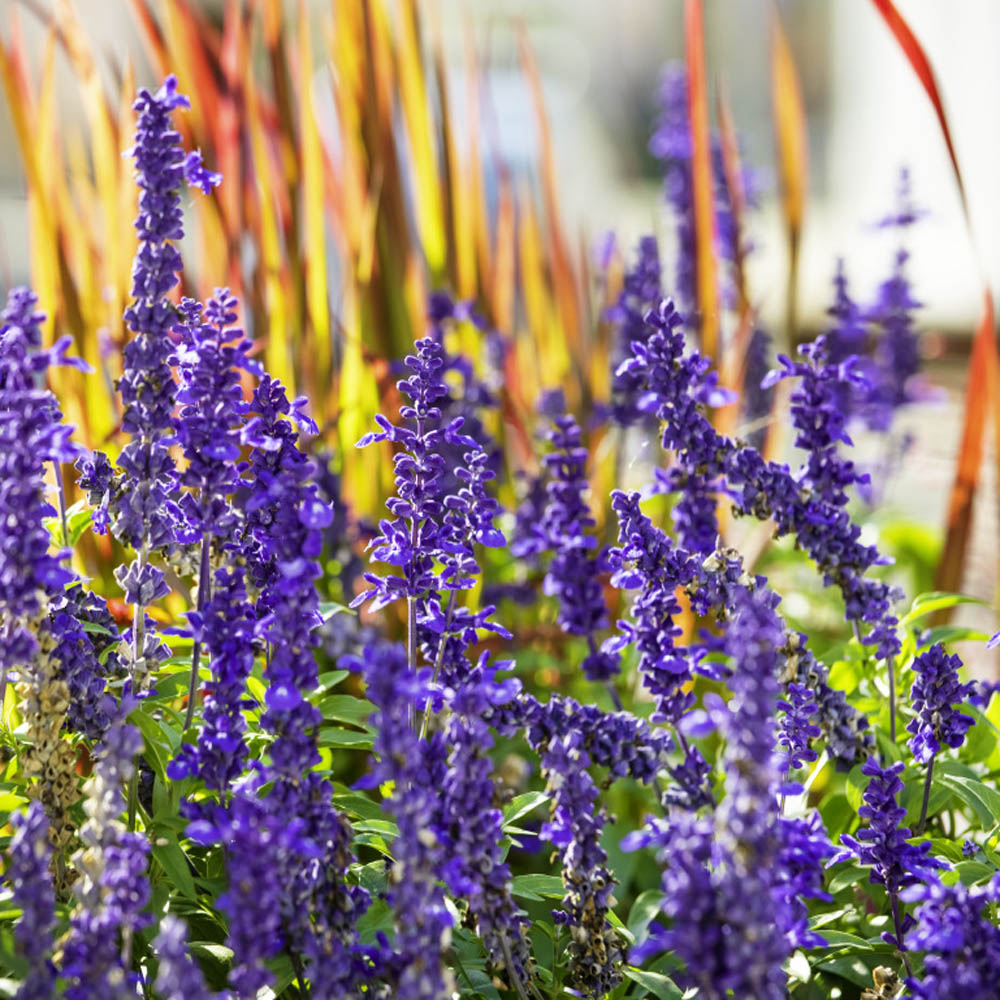
Clary Planting and Care Guide
Quick Facts About Clary
Clary (also called Clary Sage) is a member of the salvia genus, and is closely related to Common Sage. Its flowers and leaves are used in aromatherapy, and they yield an essential oil. The blooms of this plant are a vibrant blue.
Planting Time
Start Clary seeds indoors 6-8 weeks before the last expected frost, or sow directly outdoors in the spring after all frost danger has passed (or in the fall in warmer climates).

Planting Location
Clary grows best in full sun, and should be planted in average, dry soil that drains well.
How to Grow Clary
- If starting indoors for a jump on the growing season, sow seeds into trays or small pots filled with a seed starter mix.
- If sowing directly outdoors, first prepare a seedbed by removing weeds and breaking up soil.
- Sow 2-3 seeds per plant at a depth of 1/4 inch, and cover.
- Keep seeds moist until germination, and maintain a temperature of about 70F degrees. Under proper conditions, these seeds should germinate in 1-2 weeks.
- Once seedlings have their first sets of true leaves and have grown a few inches, thin to strongest seedling and plant 2-3 feet apart in the garden or in individual pots after all frost danger has passed.
- Before transplanting seedlings into the garden, it's essential to "harden them off". This involves acclimating young plants to outdoor conditions by placing them in a sheltered outdoor area for about a week. Initially, shield them from strong winds and direct sunlight. If there's a risk of frost overnight, either cover the plants or bring them indoors, then return them outside in the morning. This hardening off method helps strengthen the plant's cell structure, minimizing transplant shock and sun damage.

Care And Maintenance
- Keep weeds under control during the growing season. Weeds compete with plants for water, space and nutrients, so control them by either cultivating often or use a mulch to prevent their seeds from germinating.
- Mulches play a vital role in preserving soil moisture and ensuring consistent soil temperatures. When it comes to annuals, using organic mulch made from shredded leaves not only enhances the appearance of the bed but also enriches the soil as it decomposes over time. Remember to keep mulch away from the plant stems to avoid potential rot issues.
- Water clary regularly until established, after which it becomes fairly drought-tolerant.
- Apply fertilizer minimally, as an excess will reduce this plant's bloom yield.
- Note that Clary is a biennial, and flowers will not appear until the second year of growth.




































